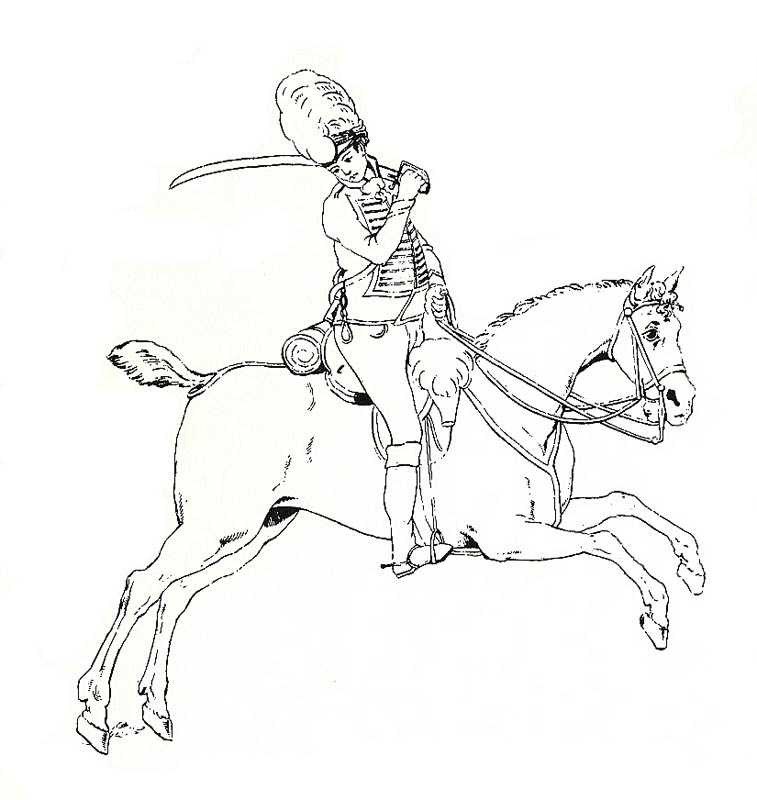How we ride: Legacy of the Sword
and Mounting Horses from the Left Side

|

|
Somewhere around 70-90 per cent of people are right-handed. It times past a mounted warrior controlled his mount with his left hand and held his sword in his right hand. Therefore, the sword or saber is worn on the left side of the body and draw by the right hand reaching across the body. This is necessary to allow for the length of the blade and drawing a sword worn on the right side with the right hand is an extremely awkward movement. In addition, since about the 16th Century many swords and sabers were made with hilts having basket type guards that are exclusively designed to be held in the right hand. The guard protected the sword hand from a raking movement by the opposing swordsman that might pass by a simple quillon crossbar and strike the sword hand. These guards would be ineffective if the sword was held with the left hand as the sides of the fingers are then exposed.

|
On occasion you will find yourself needing to mount from the right side, called the off side by horseman. This may happen during a trail ride on a narrow hillside path when remounting from a bank with the uphill side on the horse’s right. Also riders might be asked to do this during a judged pleasure ride and, I must confess, I find it awkward to do. However, Native American riders, who did not wear swords, frequently, if not exclusively, mounted from the right side. In the American West a horse who was accustomed to being mounted from the right was called, “Indian broke.” Claims are made that Native Americans copied this from the Spanish but depictions I have seen of Spanish knights mounting show a left sided mount. Also in classical times spearman often mounted from the right side. This was because the spear (lance) was held in the right hand and the rider vaulted on the horse by swinging his left leg over while releasing the left hand from the horse’s body. It is stated that in feudal Japan Samurai warriors also mounted from the right. They are also generally depicted in artwork as wearing swords on the left side, but it is possible that swords were handed to Samurai by retainers after mounting or worn on the back. The point here is that there is no true right or wrong side when it comes to right- or left-sided mounting. It is a question of tradition and what the horse and rider are accustomed to. Those who mount from the left are living the legacy of the sword.